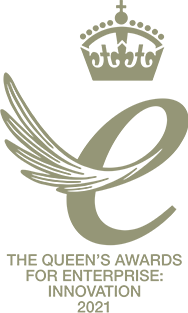Magnesium flakes and Dead Sea salts are similar products and offer similar benefits. On this page we answer the following questions:
- What are magnesium flakes?
- What are Dead Sea salts?
- How are they different?
- How do the benefits of magnesium flakes and Dead Sea salts compare?
- What’s the best way to use them?
What are magnesium flakes?
Magnesium flakes are small flakes of magnesium chloride you dissolve in water. As you relax in the bath or soak your feet, the magnesium absorbs through your skin, meaning you benefit from its therapeutic properties faster.
Some of the benefits of magnesium flakes include the following:
- Supports healthy bones
- Improves skin health
- Helps you relax before going to sleep
- Relieves muscle tension
Click here to read more about magnesium flakes and how they help your body.
What are Dead Sea salts?
Dead Sea salts are mineral salts extracted from the Dead Sea, a salt lake located between Jordan, Israel and Palestine.

They are a different type of salt to sea salt and regular table salt in that they have an off-white colour and contain much less sodium. They are, however, abundant in many other minerals, such as magnesium, potassium, calcium and bromide.
Because of this mineral-rich composition, they have become famous for their healing properties—many people still visit the Dead Sea each year to soak in its waters. The salts are sold in stores as products for skincare and promoting general good health.
Like magnesium flakes, they:
- are transdermal—absorbable through the skin
- dissolve in water, meaning you can add them to your bath as a way to increase your magnesium intake
How are they different?
The main difference between magnesium flakes and Dead Sea salts is in what they consist of:

Magnesium + chloride
=
Magnesium flakes

Magnesium + several other minerals (potassium, calcium, sulphur, bromide etc)
=
Dead Sea salts
Because Dead Sea Salts contain other minerals they can be used for a wider range of ailments, but when harnessing the benefits of magnesium they are less effective than magnesium flakes.
Magnesium flakes are pure magnesium chloride, so have a higher concentration of magnesium (we guarantee at least 47% magnesium mineral quality in our flakes). Dead Sea salts are composed of 21 different minerals and so are likely to contain a lower concentration of magnesium.
How do the benefits of magnesium flakes and Dead Sea salts compare?
Magnesium flakes and Dead Sea salts have largely the same effects and health benefits. As both products contain a high level of magnesium, they both help to:
- support normal joint function
- relieve muscle tension
- hydrate skin
- relieve physical stress and fatigue
Dead Sea salts’ impact on skin health is often emphasised. Just like magnesium flakes, Dead Sea salts can hydrate the skin, improve the skin barrier function and soothe irritated skin.
Skin health and skin barrier function
Many people suffer with skin irritation—dry, rough, red, itchy skin. This can be caused by sun damage, humidity and a host of other factors. Both magnesium flakes and Dead Sea salts can help relieve these unpleasant symptoms.
Soaking regularly in water treated with one of these products—or a blend of them—is known to nourish, replenish and hydrate the skin and repair its barrier function (the outermost layer of the skin that ensures essential water and electrolytes don’t evaporate from your body).
Transepidermal water loss and skin hydration
Transepidermal water loss (TEWL) is water that’s naturally lost through the skin because of the environment and the state of the skin itself. So things like low humidity, or a burn or injury to the skin, can affect TEWL.
This isn’t the same as sweat, however. TEWL is a passive mechanism and the moisture doesn’t originate in the sweat glands, whereas sweat is an active mechanism designed to cool the body down.
Measuring the amount of TEWL is a useful way to understand how healthy your skin is, and quality skincare products such as magnesium flakes or Dead Sea salts can help you maintain healthy TEWL levels.
Joint flexibility
The minerals in magnesium flakes and Dead Sea salts have been shown to support joint flexibility. This is because they enable the blood to circulate more freely, which in turn reduces swelling and relaxes the muscles.
Magnesium flakes can help maintain normal bone health by encouraging calcium absorption.
Sore muscles and sports recovery
Soaking in Dead Sea salts or magnesium flakes can help soothe sore muscles and contribute to your recovery after playing sports. Magnesium:
- supports electrolyte balance
- contributes to normal energy-yielding metabolism
- aids normal protein synthesis
- contributes to a reduction of tiredness and fatigue
What’s the best way to use them?
Both magnesium flakes and Dead Sea salts are transdermal products, meaning they allow the magnesium to absorb into your skin when you take a bath or soak your feet.
You can find out more about transdermal magnesium on this page and about BetterYou’s Magnesium Flakes here.
|
How to use them |
|
|---|---|
| Magnesium flakes | Dead Sea salts |
|
Bath
Simply add around 250g to your bathwater—increase the dosage if you’d like a more intensive treatment. Spend at least 20 minutes in the tub so the magnesium can absorb properly into your skin. It’s recommended you take a magnesium bath two or three times a week. Foot soak Use 150g for every five litres of water. |
Bath
Add 250g to a warm bath. Foot soak Sprinkle around 30g into your foot bath. |
Are Dead Sea salts the same as Epsom salts?
No. Putting aside their places of origin—Dead Sea salts come from the Dead Sea, while Epsom salts were first found naturally near Epsom in Surrey—there are other notable differences, the main one being their composition.
While Dead Sea salts are made up of salt (sodium chloride) and more than 20 minerals, Epsom salts contain no salt at all. Instead, Epsom salts form when high levels of magnesium and sulphate combine in water. They are known as ‘salts’ simply because they resemble salt crystals and have similar properties.
Most Epsom salts you find today are man-made, although there are still natural sources in Europe and the US. However, because Epsom salts that occur naturally in open water can be exposed to man-made pollutants and heavy metals, there can be a question mark over their purity.
While it’s safe to take small amounts of Epsom salt orally or by enema to treat constipation, Dead Sea salts can be harmful if consumed or used in the same way.
Click here to read more about Epsom salts and how they compare to magnesium flakes.
Can you mix magnesium flakes with Dead Sea salts or Epsom salts?
Yes. Indeed, many skincare professionals recommend blending different types of bath salts so you get the benefits of all of them. Using magnesium flakes and Dead Sea salts together is just one combination—you might also blend:
- magnesium flakes with essential oils—e.g. chamomile, clary sage, lavender oil
- bath salts with essential oils—e.g. clary sage, lavender oil or ylang ylang
- bath salts with bicarbonate of soda (baking soda)—bicarbonate of soda helps heal the skin and is often used to treat topical conditions




